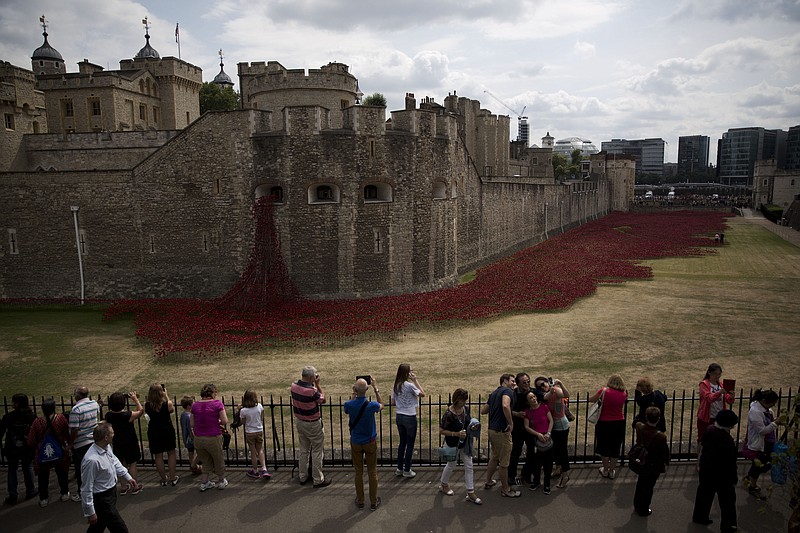LONDON (AP) - A blood-red sea of ceramic poppies is spilling from the Tower of London to commemorate British and Commonwealth soldiers killed in World War I on the 100th anniversary of its start.
The Duke and Duchess of Cambridge joined Prince Harry on Tuesday to symbolically "plant" poppies in the dry moat surrounding the Tower to honor the military dead.
The installation, called "Blood Swept Lands And Seas Of Red," is at the moment made up of 120,000 ceramic poppies, a carpet of crimson. The red tide will widen in the coming months until there are 888,246 poppies - one for each of the British and Commonwealth soldiers killed in the war.
The poppy has been the traditional symbol of remembrance in Britain since World War I, when a poem from the era recalled the fragile flower melding with the dead in Flanders.
The project is meant to convey an army not as a faceless machine but as individuals, unique and special in their own right.
"I'm literally trying to represent people because a number is a number, but if you see it all like this it is a visual idea of how many people were there," said its creator, Paul Cummins.
Each of the poppies in the moat took three days to make. They will later be sold for $42 and sent to the buyers after Armistice ceremonies in November.
The money will go to British charities such as the Royal Legion and Help for Heroes, which serve British veterans.
Some 8,000 volunteers will be placing the ceramic flowers that are attached to sticks and placed in the ground. One of them was 72-year-old Joan Clayton-Jones, whose great-uncle was killed, as was her husband's grandfather.
"I have a photograph of my great-uncle in my bag today," she said.

